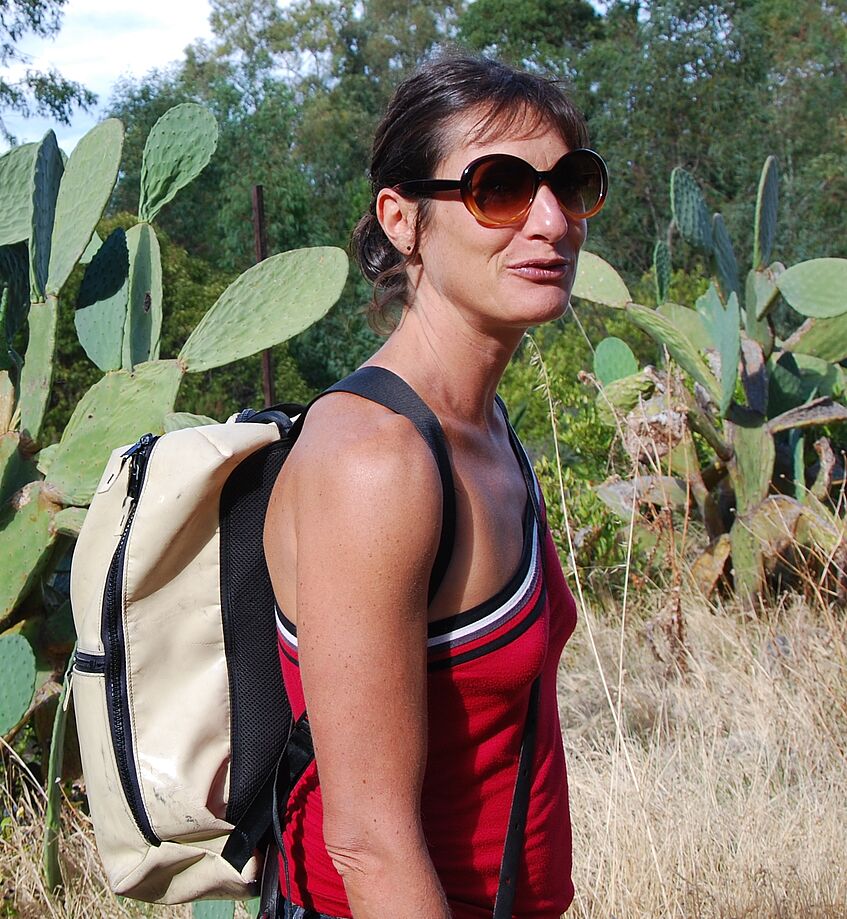Marine nematode ectosymbioses
Stilbonematids (Desmodoridae, Chromadoria) are marine nematodes coated with sulfur-oxidizing bacteria. They are the only known metazoans capable of establishing monospecific ectosymbioses. Hundreds of highly specialized hypodermal glandular sensory organs (GSOs) appear to play a fundamental role in symbiosis establishment and maintenance: they produce the mucus the symbionts are embedded in. In the course of the proposed project, we want to study abundantly expressed nematode genes that were discovered by sequencing the Laxus oneistus transcriptome by conventional and second generation sequencing. Among these, some are secreted by the GSOs onto the worm's surface and might play a role in symbiosis. In order to understand their function, we will analyze their expression pattern within the GSO and try to silence them by RNA interference. Concomitantly, we will start to explore how the microbial partners manage to dividing without loosing physical contact with their hosts. The study of relatively simple, naturally occurring symbioses may be instrumental in understanding how beneficial and pathogenic microbes interact with the mucosal surfaces of higher vertebrates.
Duration: 10.06.2010-09.08.2014
Funding agency: Austrian Science Fund (FWF): 22470
Project leader: Dr. Silvia Bulgheresi
Project findings:
Beneficial microbes make up to 2 kg of our body weight and greatly impact our health, development and evolution. However, the overwhelming complexity of the human microbiota spurred the search for simpler animal-microbe associations, such as those engaging marine nematodes (Stilbonematinae) and autotrophic bacteria. Not only is every worm species belonging to this family coated with solely one species of bacteria. Additionally, their spatial arrangement is maintained throughout the host life and among host generations. Bacterial symbiont coats can resemble simple epithelia, furs or knitting patterns and their establishment on the worm surface requires both (1) dedicated surface molecules and (2) extraordinary reproduction modes. The aim of the project was to elucidate these fundamental processes. To understand the molecular mechanisms of symbiont selection (1), we focused on a family of worm- secreted putative antimicrobials, the Bactericidal Permeability Increasing (BPI) proteins. Two of these show high structural and biochemical similarity with human immune effectors that are central in pathogen clearance from mucosal tissues. They are secreted throughout the worm surface and possibly prevent colonization by non-symbiotic microorganisms. Concomitantly, (2) we characterized the reproduction modes of four nematode-attached bacteria and showed that they all break long-standing cell biological tenets. Namely, two rod- shaped symbionts set their septation plan along their long axis (instead of dividing transversally), filamentous symbionts divide symmetrically despite being over 100 µm -long, and - finally - crescentshaped symbionts display an unprecedented cell length variation.
In conclusion, the study of relatively simple, naturally occurring animal-bacteria symbioses confirmed cross-kingdom conservation of innate immune molecules mediating specific microorganisms settlement on host surfaces. Moreover, the study of cell division in naturally occurring bacteria revealed that this key process might divert dramatically from that of wellstudied model bacteria. Therefore, the results obtained in the performed project are a call to extend molecular cell biological studies to environmental microbes. In particular, studying cell division in nematode-associated bacteria will foster the identification of its conserved structural and regulatory molecules. Given that the marine worm symbionts belong to one of the most relevant group of bacteria - both medically and environmentally - understanding the evolution and the fundamentals of their reproduction may yield major applied benefits.

Silvia Bulgheresi


